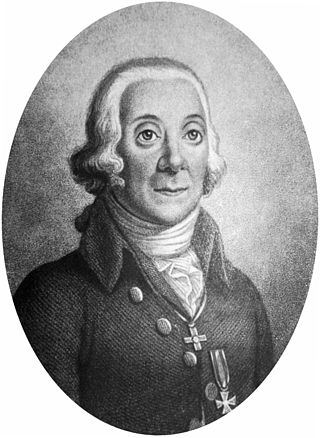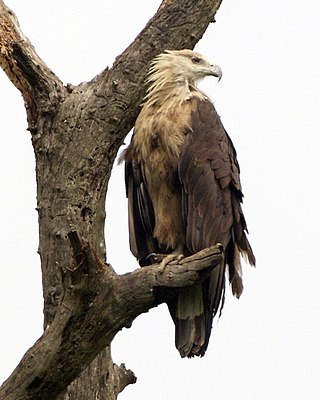
Pallas is the second asteroid to have been discovered, after Ceres. Like Ceres, it is believed to have a mineral composition similar to carbonaceous chondrite meteorites, though significantly less hydrated than Ceres. It is the third-largest asteroid in the Solar System by both volume and mass, and is a likely remnant protoplanet. It is 79% the mass of Vesta and 22% the mass of Ceres, constituting an estimated 7% of the mass of the asteroid belt. Its estimated volume is equivalent to a sphere 507 to 515 kilometers in diameter, 90–95% the volume of Vesta.

Pallas's leaf warbler or Pallas's warbler, is a bird that breeds in mountain forests from southern Siberia east to northern Mongolia and northeast China. It is named for German zoologist Peter Simon Pallas, who first formally described it. This leaf warbler is strongly migratory, wintering mainly in south China and adjacent areas of southeast Asia, although in recent decades increasing numbers have been found in Europe in autumn.

The Pallas's cat, also known as the manul, is a small wild cat with long and dense light grey fur, and rounded ears set low on the sides of the head. Its head-and-body length ranges from 46 to 65 cm with a 21 to 31 cm long bushy tail. It is well camouflaged and adapted to the cold continental climate in its native range, which receives little rainfall and experiences a wide range of temperatures.

Pallas's sandgrouse is a medium to large bird in the sandgrouse family.

Pallas's grasshopper warbler, also known as the rusty-rumped warbler, is an Old World warbler in the grass warbler genus Helopsaltes. It breeds in the eastern Palearctic: from the Altai Mountains, Mongolia and Transbaikalia to northeastern China, the Korean Peninsula, and islands in the Sea of Okhotsk. It is migratory, wintering from India eastward to Indonesia. It is a rare migrant in Sri Lanka.

Pallas's gull, also known as the great black-headed gull, is a large bird species. As is the case with many gulls, it has traditionally been placed in the genus Larus. The scientific name is from Ancient Greek. Ichthyaetus is from ikhthus, "fish", and aetos, "eagle".

Peter Simon Pallas FRS FRSE was a Prussian zoologist, botanist, ethnographer, explorer, geographer, geologist, natural historian, and taxonomist. He studied natural sciences at various Universities in early modern Germany and worked primarily in the Russian Empire between 1767 and 1810.

The pallasites are a class of stony–iron meteorite. They are relatively rare, and can be distinguished by the presence of large olivine crystal inclusions in the ferro-nickel matrix.

Pallas and the Centaur is a painting by the Italian Renaissance painter Sandro Botticelli, c. 1482. It is now in the Uffizi Gallery in Florence. It has been proposed as a companion piece to his Primavera, though it is a different shape. The medium used is tempera paints on canvas and its size is 207 x 148 cm. The painting has been retouched in many places, and these retouchings have faded.

Pallas's fish eagle, also known as Pallas's sea eagle or band-tailed fish eagle, is a large, brownish sea eagle. It breeds in the east Palearctic in Kazakhstan, Russia, Tajikistan, Turkmenistan, Uzbekistan, Mongolia, China, India, Nepal, Bangladesh, Myanmar and Bhutan. It is listed as Endangered on the IUCN Red List. It is partially migratory, with Central Asian birds wintering among the southern Asian birds in northern India, and also further west to the Persian Gulf.

"Pallas Athena" is a song written by David Bowie in 1993 for the album Black Tie White Noise. A live version of the song was recorded and released in 1997 during Bowie's Earthling Tour.

The palla was an elegant cloak or mantle that was wrapped around the body. It was worn outside the house by (affluent) Roman women. It was a luxurious version of the Roman women's pallium. The palla was a traditional ancient Roman mantle worn by women, fastened by brooches. The shape was rectangular instead of semi-circular, as with the traditional toga. The garment dates to the 3rd century BC, but the type of dress must be much older. In Latin literature, the term palla is used ambiguously. It can denote not only a cloak, but also a foot-long sleeveless dress with straps worn directly on the skin. The second is a common dress form in the entire Mediterranean world. In a Greek cultural context, this is called peplos. In a Roman cultural context, if worn by a Roman matron, it also takes the name stola.

In Roman mythology, Pallas was the son of King Evander. In Virgil's Aeneid, Evander allows Pallas to fight against the Rutuli with Aeneas, who takes him and treats him like his own son Ascanius. In battle, Pallas proves he is a warrior, killing many Rutulians. Pallas is often compared to the Rutulian Lausus, son of Mezentius, who also dies young in battle. Tragically, however, Pallas is eventually killed by Turnus, who takes his sword-belt, which is decorated with the scene of the fifty slaughtered bridegrooms, as a spoil. Throughout the rest of Book X, Aeneas is filled with rage (furor) at the death of the youth, and he rushes through the Latin lines and mercilessly kills his way to Turnus. Turnus, however, is lured away by Juno so that he might be spared, and Aeneas kills Lausus, instead, which he instantly regrets.
In Greek mythology, Pallas was, according to Hesiod, the son of the Titans Crius and Eurybia, the brother of Astraeus and Perses, the husband of Styx, and the father of Zelus, Nike ("Victory"), Kratos, and Bia. Hyginus says that Pallas, whom he calls "the giant", also fathered with Styx: Scylla, Fontus ("Fountains") and Lacus ("Lakes"). Pallas was sometimes regarded as the Titan god of warcraft and of the springtime campaign season.
In Greek mythology, Pallas was a warrior and a daughter of Triton.
Timothy Hugh Pallas is an Australian politician. He has been a Labor Party member of the Victorian Legislative Assembly since 2006, representing the electorate of Tarneit until 2014 and Werribee thereafter. He has served as Treasurer of Victoria in the all three of the Andrew Ministries since December 2014. and is currently still serving as treasurer in the Allan Ministry in 2023. Pallas previously served as Minister for Roads and Ports and Minister for Major Projects in the Brumby Ministry until 2010.

Pallas's pika, also known as the Mongolian pika, is a species of small mammals in the pika family, Ochotonidae. It is found mainly in the mountains of western Mongolia.
HMS Pallas was a 32-gun fifth rate Thames-class frigate of the Royal Navy, launched in 1804 at Plymouth.
The Palla barrage is a barrage located in Palla on the Yamuna-Faridabad canal in Faridabad district of Haryana state in India. This irrigation canal runs to the west of Yaumna through Fridabad, Palwal, Mathura and Agra districts where it terminates in the farms. Palla, Faridabad is not to be confused with Palla, Delhi, a Yamuna pollution monitoring station 23 km upstream of Wazirabad barrage.
The Pallas-1 is a medium-lift orbital launch vehicle under development by Galactic Energy. It features seven new 40-ton variable thrust Welkin engines burning RP-1 and liquid oxygen (kerolox) in its first stage. The first stage will have legs and grid fins to allow for stage recovery by vertical landing.














